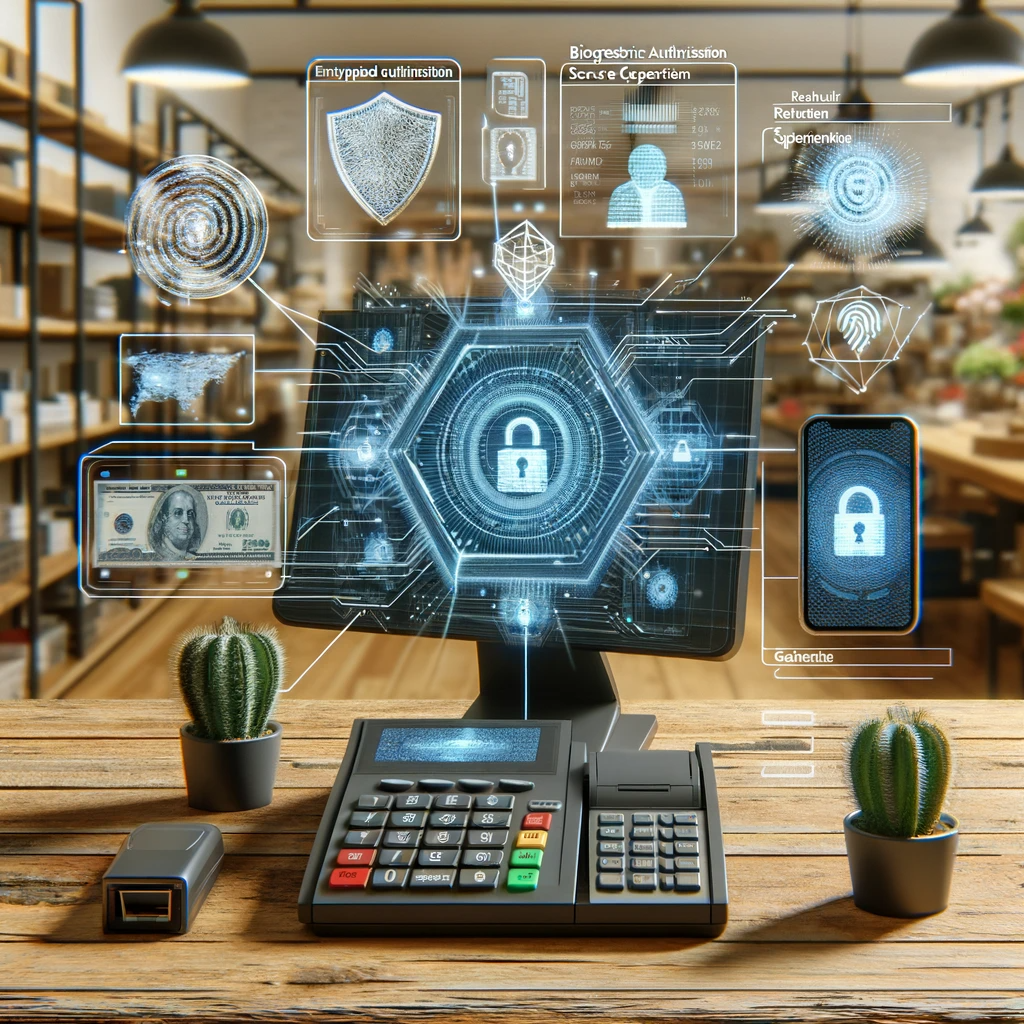Point of sale (POS) systems are an integral part of modern retail operations, therefore POS System Cybersecurity should be among the highest priorities to this type of business. They facilitate transactions by optimizing operations for various types of businesses such as convenience stores, salons, hardware stores, computer shops, and food trucks.
Most of us only see the hardware components of POS systems like cash drawers, card readers, receipt printers and touch screens. However, POS systems also include software that is responsible for storing and transmitting data. The software component is what makes them vulnerable to cybersecurity attacks. Whether it’s computer POS software, jewelry store software, shoe store software, deli software, or even salon POS software, they’re all vulnerable to cyber-attacks.
What is the solution? Well, since a lot of personal and financial information can be accessed by attackers if POS software isn’t properly secured, it is critical to secure your systems accordingly.
Let’s take a glance at cybersecurity trends for POS software and systems to help you guard your transactions.
Encryption Technologies for POS systems
Encryption is essential in any system where data is being transmitted and POS systems are not an exception. There are two sets of data that need protection, data-at-rest and data-in transit. Data-at-rest is data that isn’t being moved but is still vulnerable to attack while data-in-transit is data being moved from one location to another. Encrypting one and leaving out the other still exposes the system to cyber-attacks therefore, it is important to secure both.
In addition, vendors and retailers have to make sure that their data is being encrypted from end-to-end. This means that any personally identifiable information (PII) is encrypted at every point in their lifecycle thus making it more difficult for hackers to access it. Only the recipients should have the encryption key to decode it.
When choosing a data encryption tool, ensure that the tool meets proper levels of encryption. It should also be easy to set up and manage.
EMV Technology Implementation
The adoption of EMV (Europay, Mastercard, and Visa) technology has greatly improved POS security, especially in retail POS software. EMV cards are equipped with microprocessor chips that generate dynamic authentication codes for each transaction. This makes it difficult for attackers to replicate credit card information.
Major POS providers provide EMV chip-enabled credit card readers. Accepting credit cards with EMV chips reduces the potential for fraud since they are difficult for hackers to copy. In case an in-person card fraud occurs while using the EMV card reader, you won’t be liable. This makes the adoption of EMV technology for your POS a great security measure and business decision.
Tokenization for POS System Cybersecurity
Tokenization is a security mechanism aimed at protecting cardholder data when carrying out transactions. This is done by replacing the real credit card details with a unique, randomly generated code called a token.
When used in POS systems, tokenization makes it possible to securely process transactions without having to store sensitive information in the system. This enhances overall security and reduces the risk of data breaches even for small businesses. Whether you’re using nail salon management software, restaurant software, or convenience store software, you reduce the risk associated with storing and processing sensitive customer information.
The use of tokenization also makes it possible for retail businesses to comply with industry data protection standards such as the (PCI DSS).
Biometric Authentication
Biometric authentication such as facial recognition, and fingerprint scanning is slowly finding its way into POS systems. Biometric point-of-sale (POS) technology uses biometric authentication to identify users and deduct funds from their bank accounts. This relies on the physical characteristics of the user which are meant to be unique.
In most cases, biometric authentication is implemented as part of a two-factor authentication process. For example, the user scans their fingerprint instead of swiping a card and then puts in their PIN as usual.
This additional layer of security ensures that only authorized individuals can initiate or access transactions, thus enhancing security for POS software.
Continuous Monitoring and Threat Detection
Real-time monitoring and threat detection are critical components of POS security. It doesn’t matter what size your business is, as long as you store and transmit sensitive data, you’re a target for cyber-attacks.
Whether you’re running a salon, bar, spa, bookshop, or hardware, you need to put in place security monitoring tools. These tools can identify suspicious activities or unusual patterns, allowing businesses to respond promptly to potential cyber threats.
Monitoring also involves being on the lookout for outdated and legacy software. Perform software updates and remove legacy software to reduce the risk of cybersecurity attacks.
Compliance with Security Standards Across Industries
Compliance is an integral part of securing POS systems. Different bodies create and enforce various standards that govern data protection. Failure to meet these regulations often leads to large penalties.
For instance, most POS systems process credit card information. In the U.S. retailers are meant to follow the Payment Card Industry Data Security Standards (PCI DSS). The goal is to protect personal data and credit card information.
You might also have heard of the General Data Protection Regulation (GDPR), which affects retailers with customers located in the European Union.
It is important to be compliant with the regulatory bodies that affect your area of operations. However, being compliant doesn’t guarantee total security. It is a great start but you also need to enforce other security measures.
Conclusion
As POS systems become more sophisticated, the need for robust cybersecurity measures is increasing. The trends outlined above showcase the industry’s commitment to staying one step ahead of cyber threats thus securing POS systems in salons, spas, bars, and retail stores.
By implementing POS System Cybersecurity, like end-to-end encryption, EMV technology, tokenization, biometrics, continuous monitoring, and compliance with security standards, you can efficiently protect your POS systems against potential cyber-attacks.






